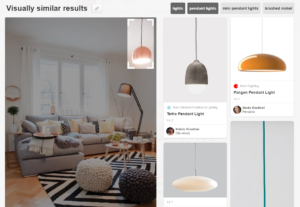Trend 4 | Social media – Go where your audience goes!
Reading time: 3 minutesThe world as we know it seems to be getting smaller and more connected by the minute. Every single minute, more than 60 new blogs are created, 695 000 Facebook status updates are made and 320 twitter accounts are registered. The most dominant player in the Social Media world is Facebook Inc., with over 1.590 million active users of the networking service, 900 million people using the messenger, over 1,000 Whatsapp (acquired by Facebook in 2014) users and 400 million active users of Instagram; and numbers are still estimated to rise even further.
What is new in 2016?
In the 1990’s, scientists were talking about the theory of ‘Six Degrees of Seperation’, theorizing that any person is linked to any other random person through 6 other people. Social Media has decreased this number significantly: the ‘six degrees of seperation’ have shrunk to a mere 3.57 degrees of seperation in February 2016.
But for marketeers, Social Media is much more than a tool to connect with friends – its a marketing opportunity. Mobile Social Media use has enabled geo-location tagging, highly specific targeting and lively interaction with users.
As a growing number of users utilises Social Media as a customer service and review tool, a timely response is crucial to ensure customer satisfaction. Research has shown, that many brands do not make as much use of interaction through Social Media as they could – according to Sprout Social reports, 82% of the direct messages to brands are not answered.

Most important social media platform? Where your audience is!
The one where your target audience is! Facebook is still the most popular one in terms of user numbers and advertising revenue, but depending on who you are targeting, there might be other, more profitable options. Instagram and Snapchat are on the rise and more popular with a younger audience; Linkedin is more suitable for B2B relations. Circumstances might differ when setting foot in a different country: in Germany and Austria, the professional network platform Xing is Linkedin’s local competitor, for example.
Social Media Search
Not only Facebook has introduced a new search tool – the visual sharing platform Pinterest has introduced an interesting new search feature: Users can select parts of a picture to search for visually similar results. So if you find a lamp that you really liked in an image of a living room, you can simply select it, and Pinterest will give you images of similar lamps – enabling a whole new dimension for searching behaviour.
Pay for exposure
Facebook and Instagram advertisements and sponsored posts are nothing new – but Facebook’s buy button lowers the threshold for customers immensely and enables them to buy directly through the add. With the growing importance of Social Media platforms as search engines, mediums of communication and connecting, it is only natural that the environment became more competitive. Organic reach has dropped over the last years, putting pressure on brands to make more use of paid options in order to be seen.
